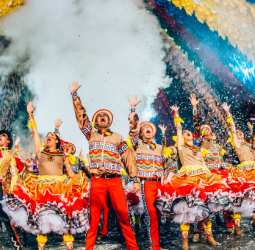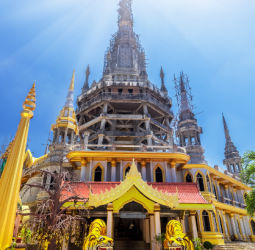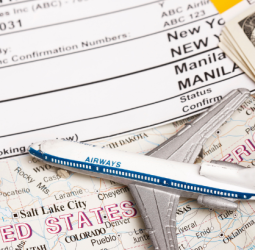Carnival in Brazil is not just a celebration, it is a cultural phenomenon that brings people together from all walks of life. This annual event is a time of joy, music, dance, and colorful parades that showcase the rich and diverse culture of Brazil. It is a time when the streets come alive with the sounds of samba, the smell of delicious food, and the sight of vibrant costumes. Let's take a closer look at this cultural celebration and the traditions that make it so unique.
The origins of carnival in Brazil can be traced back to the 18th century when it was introduced by Portuguese settlers. It was initially a celebration of the Catholic tradition of Lent, a time of fasting and abstinence. However, over the years, it has evolved into a grand celebration that lasts for four days, leading up to Ash Wednesday. It is a time when people let go of their worries and immerse themselves in the festivities.
One of the most significant aspects of carnival in Brazil is the parade of samba schools. These schools are not your typical educational institutions, but rather groups of people who come together to celebrate their community and culture. Each school has a specific theme, and they spend months preparing for the parade, creating elaborate costumes, and choreographing dance routines. These parades take place in the Sambadrome, a massive purpose-built stadium in Rio de Janeiro, where thousands of spectators gather to witness the spectacle.
Another essential tradition of carnival in Brazil is the use of masks and costumes. These are not just for show, but they have a symbolic meaning behind them. The masks represent the idea of anonymity, where people can let go of their inhibitions and be whoever they want to be. The costumes, on the other hand, are a reflection of the diverse cultural influences in Brazil. From the colorful feathers and glitter of the samba dancers to the traditional dress of indigenous tribes, the costumes are a visual representation of the country's melting pot of cultures.
Food is another integral part of carnival in Brazil. The streets are filled with food stalls selling traditional dishes such as feijoada (a hearty bean and meat stew) and acarajé (deep-fried bean fritters). These dishes have their roots in African and indigenous cuisine, showcasing the country's diverse cultural heritage. And let's not forget about the drinks! Caipirinha, a cocktail made with cachaça (a Brazilian liquor), lime, and sugar, is a popular choice among carnival-goers.
Aside from the main festivities in Rio de Janeiro, carnival is celebrated in other cities and towns across Brazil. Each region has its unique traditions and customs, adding to the overall richness of the celebration. In Salvador, the largest carnival celebration in the country, the streets are filled with trios elétricos, large trucks equipped with sound systems that play music and carry performers. In Olinda, a historic city in the northeast, carnival is a more laid-back affair, with people dancing in the streets to the beat of maracatu drums.
In conclusion, carnival in Brazil is much more than just a party. It is a celebration of the country's cultural diversity and a time for people to come together and celebrate their heritage. It is a lively and colorful event that showcases the best of Brazilian music, dance, and food. So, if you ever find yourself in Brazil during carnival season, be sure to join in on the festivities and experience this unique cultural celebration for yourself.
The origins of carnival in Brazil can be traced back to the 18th century when it was introduced by Portuguese settlers. It was initially a celebration of the Catholic tradition of Lent, a time of fasting and abstinence. However, over the years, it has evolved into a grand celebration that lasts for four days, leading up to Ash Wednesday. It is a time when people let go of their worries and immerse themselves in the festivities.
One of the most significant aspects of carnival in Brazil is the parade of samba schools. These schools are not your typical educational institutions, but rather groups of people who come together to celebrate their community and culture. Each school has a specific theme, and they spend months preparing for the parade, creating elaborate costumes, and choreographing dance routines. These parades take place in the Sambadrome, a massive purpose-built stadium in Rio de Janeiro, where thousands of spectators gather to witness the spectacle.
Another essential tradition of carnival in Brazil is the use of masks and costumes. These are not just for show, but they have a symbolic meaning behind them. The masks represent the idea of anonymity, where people can let go of their inhibitions and be whoever they want to be. The costumes, on the other hand, are a reflection of the diverse cultural influences in Brazil. From the colorful feathers and glitter of the samba dancers to the traditional dress of indigenous tribes, the costumes are a visual representation of the country's melting pot of cultures.
Food is another integral part of carnival in Brazil. The streets are filled with food stalls selling traditional dishes such as feijoada (a hearty bean and meat stew) and acarajé (deep-fried bean fritters). These dishes have their roots in African and indigenous cuisine, showcasing the country's diverse cultural heritage. And let's not forget about the drinks! Caipirinha, a cocktail made with cachaça (a Brazilian liquor), lime, and sugar, is a popular choice among carnival-goers.
Aside from the main festivities in Rio de Janeiro, carnival is celebrated in other cities and towns across Brazil. Each region has its unique traditions and customs, adding to the overall richness of the celebration. In Salvador, the largest carnival celebration in the country, the streets are filled with trios elétricos, large trucks equipped with sound systems that play music and carry performers. In Olinda, a historic city in the northeast, carnival is a more laid-back affair, with people dancing in the streets to the beat of maracatu drums.
In conclusion, carnival in Brazil is much more than just a party. It is a celebration of the country's cultural diversity and a time for people to come together and celebrate their heritage. It is a lively and colorful event that showcases the best of Brazilian music, dance, and food. So, if you ever find yourself in Brazil during carnival season, be sure to join in on the festivities and experience this unique cultural celebration for yourself.



 travelslotlifestyle
travelslotlifestyle
















